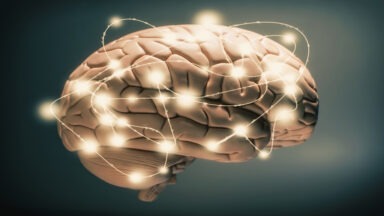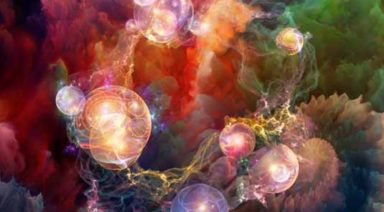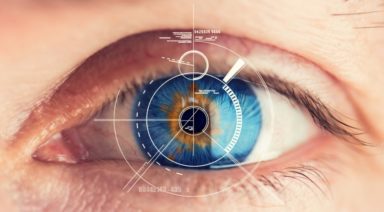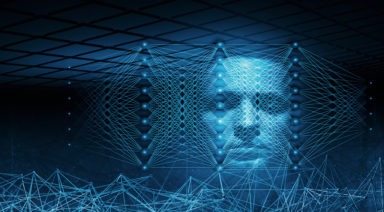Times of Social Unrest Appear to Boost Our Brain’s Neuroplasticity

New research suggests that times of global unrest present a unique opportunity for neurological growth and profound behavior change, but only when leveraged correctly.
Kayla Osterhoff is a neuropsychophysiologist who studies the interaction of the mind and brain, which she calls the ‘human operating system.’
“One of the greatest mysteries in modern neuroscience is actually how the brain produces the mind. The reason why we have not been able to come up with the answer for this is because that’s not how it works. These two are actually separate systems that interact together to produce what I call the ‘human operating system,’ which is responsible for our version of reality as humans,” Osterhoff said.
Osterhoff has recently been researching the hypothesis that times of social unrest provide a valuable opportunity to neurologically upgrade this human operating system.
“Right now, we have this very unique opportunity to upgrade our ‘human operating system’ globally,” Osterhoff said. “And that is because as a society around the entire world we are experiencing this social unrest and this has caused a couple of significant cognitive and neurological shifts that have provided an opportunity for us to grow and evolve as a society.”
Osterhoff points to several fascinating factors that contribute to this phenomenon.
“So, studies are showing that acute states of stress, like shock, trauma, or something surprising like what we’re currently experiencing in our world, caused this cognitive psychological shift that actually makes our subconscious mind more suggestible, meaning that our subconscious mind is brought forward so to speak, and it’s more malleable, it’s more programmable,” Osterhoff said.
“If you look back at clinical hypnosis research and Ericksonian research — he was kind of the father of clinical hypnosis — he found in his research that shock and surprise are actually a form of hypnotic induction that can be utilized to reprogram the subconscious mind or increase subconscious suggestibility,” she said.
Another contributing factor Osterhoff has uncovered has to do with the phenomenon of neuroplasticity.
“So, neuroplasticity refers to the way that our neurons, our brain cells, fire, and wire together. So, neuroplasticity increases our ability to change and reshape these neural pathways,” Osterhoff said. “The second opportunity that we have right now is a global increase in neuroplasticity. Now, in these times of unrest, our lives have been upended, our patterns have shifted, and we’re experiencing things for the first time. So, because of this our globe is experiencing heightened neuroplasticity and heightened subconscious suggestibility.”
What are the implications of these findings?
“Now, the opportunity here is that we can leverage these two abilities to change, grow, evolve, shift, and learn to our benefit or if we remain unaware of this, we can be shifted in a way that is detrimental to us as well,” Osterhoff said.
“For instance, if you want to quit smoking, or you want to change some kind of behavior, you have a greater ability to do that right now than ever before. On the opposite side of things, if you spend this time in fear or in worry, you risk hardwiring those behaviors into your physiology. Because this is happening on a mass scale, our world has a greater capacity to evolve, shift, and grow than it ever has before. So we need to leverage this, we need to take advantage so that we can make the positive changes that we want to see in the world happen.”
432 Hz Frequency: What It Is And How To Connect With Its Power

The 432 Hz frequency is a musical tuning used since ancient times by various cultures due to its harmonizing effect on the body and mind. Its sound resonates with mathematical patterns found in nature and is considered a tool for well-being and the expansion of consciousness. In this article, we explore what the 432 Hz frequency is, its uses, and how to incorporate it into daily life.
Table of Contents
- What Is The 432 Hz Frequency?
- What Is The 432 Hz Frequency Used For?
- Differences Between 432 Hz And 440 Hz Frequencies
- How To Use The 432 Hz Frequency In Your Daily Life
What Is The 432 Hz Frequency?
The 432 Hz frequency is a musical tuning that maintains a mathematical relationship with nature and the universe. It is in tune with the golden ratio, present in the structure of the human body and in patterns such as the Fibonacci sequence. Its sound is more harmonious and balanced compared to the standard 440 Hz tuning.
Different civilizations have used this frequency in their spiritual and ceremonial practices. In ancient Greece, Pythagorean music was based on mathematically perfect scales, while in Egypt and India specific sounds were used to induce deep meditative states. Many ancient instruments were designed to vibrate at 432 Hz, suggesting an intuitive understanding of its impact on consciousness.
In the series Sound of Creation, available on Gaia, experts like Gregg Braden and Dr. Robert Gilbert explore the relationship between sound, sacred geometry, and the vibration of the universe. Through scientific findings and ancestral knowledge, this series reveals how certain frequencies can influence perception and human well-being.
What Is The 432 Hz Frequency Used For?
The 432 Hz frequency has multiple applications for harmonizing the body and mind. Its balanced vibration influences emotional states, concentration, and energetic health. Below are some of its main functions:
- Deep relaxation: It lowers heart rate and brain activity, reducing stress and anxiety. Its sound has a calming effect that facilitates meditation.
- Enhanced concentration: It increases mental clarity and promotes focus. Listening to music in this frequency during study or work improves information retention.
- Energy balance: It aligns the flow of energy in the body and harmonizes the chakras. Its vibration restores physical and emotional well-being.
- Greater connection with nature: It resonates with the Earth’s frequency, strengthening the sense of unity with the environment. Listening to it outdoors enhances its beneficial effects.
- Induction to restorative sleep: It promotes progressive relaxation that facilitates deep rest. Using it before bedtime helps improve sleep quality and reduce anxiety before sleeping.
- Emotional healing: It releases accumulated tension and balances the nervous system. Its vibration works on the subconscious, promoting well-being and emotional balance.
- Creativity stimulation: It activates areas of the brain related to inspiration and imagination. It is ideal for boosting creativity in artistic and expressive disciplines.
Differences Between 432 Hz And 440 Hz Frequencies
The 432 Hz and 440 Hz frequencies are both used to tune musical instruments, but generate different effects in those who listen to them. Today, most music is tuned to 440 Hz, a standard officially adopted in the 20th century. However, 432 Hz has been used in various traditions for its more harmonic sound and its ability to induce relaxation.
Many people perceive music tuned to 432 Hz as softer and more balanced, whereas 440 Hz may feel more tense and stimulating. For this reason, 432 Hz is preferred in practices involving meditation, healing, and wellness. While both frequencies can trigger emotional and physical responses, 432 Hz has become a popular alternative for those seeking a more harmonious and profound sound experience.
How To Use The 432 Hz Frequency In Your Daily Life
Incorporating the 432 Hz frequency into your daily routine is a simple way to promote well-being and emotional balance. You can listen to music tuned to 432 Hz during meditation, upon waking, while working, or before sleeping. It’s also helpful in yoga sessions, massages, or any relaxation practice, as its vibration enhances focus and energetic harmony.
-
432 Hz Music For Meditation And Mental Balance
Meditating with 432 Hz music enhances relaxation and facilitates connection with the present moment. Its vibration induces a state of mental calm, reducing internal noise and allowing for a deeper meditative experience. Many people use it to relieve anxiety, improve focus, and enhance introspection.
An example of this frequency can be found in the series Fractal Universe: Meditations for Conscious Elevation, available on Gaia, where sound patterns and geometry are explored to facilitate deep meditative states. The first episode uses a frequency based on the Schumann resonance, related to the Earth’s natural vibration, allowing the mind to synchronize with a state of balance and expansion.
-
Using The 432 Hz Frequency For Energy Healing
The 432 Hz frequency is used in sound therapies to balance the body’s energy and release emotional blockages. It’s believed that its vibration harmonizes the chakras and improves the flow of vital energy, making it effective in practices like Reiki, sound bowl therapy, and vibrational healing sessions.
Listening to this frequency while practicing breathing or visualization exercises can enhance its effects. Its sound generates a sensation of well-being and stability, helping to restore emotional and physical balance. For this reason, many people incorporate it into their healing and self-discovery journey.
-
How To Listen To 432 Hz Music For Better Sleep
Music in 432 Hz is an effective tool to improve sleep quality and reduce anxiety before sleeping. Its soft, enveloping sound slows down mental activity, helping the body enter a state of deep relaxation. Listening to it for a few minutes before bed can ease the transition to sleep and reduce insomnia.
To enhance its effects, it’s advisable to create a quiet and distraction-free environment. You can combine the music with slow breathing exercises or nature sounds tuned to the same frequency. This practice calms the nervous system and promotes more restorative rest.




































